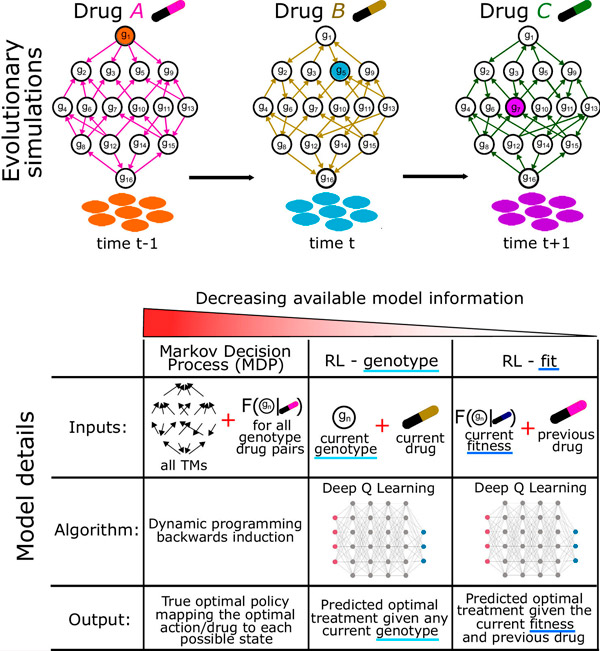New publications
Artificial intelligence could develop treatments to prevent 'superbacteria'
Last reviewed: 02.07.2025

All iLive content is medically reviewed or fact checked to ensure as much factual accuracy as possible.
We have strict sourcing guidelines and only link to reputable media sites, academic research institutions and, whenever possible, medically peer reviewed studies. Note that the numbers in parentheses ([1], [2], etc.) are clickable links to these studies.
If you feel that any of our content is inaccurate, out-of-date, or otherwise questionable, please select it and press Ctrl + Enter.

Researchers at the Cleveland Clinic have developed an artificial intelligence (AI) model that can determine the best combination and timing of drugs to treat a bacterial infection based solely on the bacteria’s growth rate under certain conditions. The team, led by Dr. Jacob Scott and his lab in the Theoretical Division of Translational Hematology and Oncology, recently published their findings in the journal Proceedings of the National Academy of Sciences.
Antibiotics are credited with increasing average life expectancy in the United States by nearly a decade. The treatments reduced death rates from health problems we now consider minor, such as some cuts and injuries. But antibiotics no longer work as well as they once did, in part because they are so widely used.
“Global health organisations agree that we are entering a post-antibiotic era,” explains Dr Scott. “If we don’t change the way we fight bacteria, by 2050 more people will die from antibiotic-resistant infections than from cancer.”
Bacteria multiply rapidly, producing mutant offspring. Overuse of antibiotics gives bacteria the opportunity to develop mutations that are resistant to treatment. Over time, antibiotics kill all susceptible bacteria, leaving only the stronger mutants that antibiotics cannot kill.
One strategy doctors use to streamline treatments for bacterial infections is called antibiotic rotation. Health care workers alternate between different antibiotics over time. Switching between different drugs gives bacteria less time to develop resistance to any one class of antibiotics. Rotation may even make bacteria more susceptible to other antibiotics.
“Drug rotation shows promise in effectively treating diseases,” says study first author and medical student Davis Weaver, PhD. “The problem is, we don’t know the best way to do it. There are no standards for which antibiotic to give, for how long, or in what order.”
Study co-author Dr. Jeff Maltas, a postdoctoral researcher at the Cleveland Clinic, uses computer models to predict how bacteria’s resistance to one antibiotic makes them weaker to another. He teamed up with Dr. Weaver to see whether data-driven models could predict drug rotation patterns that minimize antibiotic resistance and maximize susceptibility, despite the random nature of bacterial evolution.
Dr. Weaver led the application of reinforcement learning to the drug rotation model, which teaches a computer to learn from its mistakes and successes to determine the best strategy for completing a task. The study is one of the first to apply reinforcement learning to antibiotic rotation schemes, according to Drs. Weaver and Maltas.

Schematic evolutionary simulation and tested optimization approaches. Source: Proceedings of the National Academy of Sciences (2024). DOI: 10.1073/pnas.2303165121
“Reinforcement learning is an ideal approach because you only need to know how fast the bacteria are growing, which is relatively easy to determine,” explains Dr. Weaver. “There’s also room for human variation and error. You don’t need to measure the growth rate down to the millisecond every time.”
The research team’s AI was able to figure out the most effective antibiotic rotation plans to treat multiple strains of E. coli and prevent drug resistance. The study shows that AI can support complex decision-making, such as calculating antibiotic treatment schedules, says Dr. Maltas.
Dr. Weaver explains that beyond managing infection in an individual patient, the team’s AI model could inform how hospitals treat infections overall. He and his research team are also working to expand their work beyond bacterial infections to other deadly diseases.
“This idea is not limited to bacteria, it can be applied to any object that can develop resistance to treatment,” he says. “In the future, we believe that these types of AI could be used to manage treatment-resistant cancers.”
